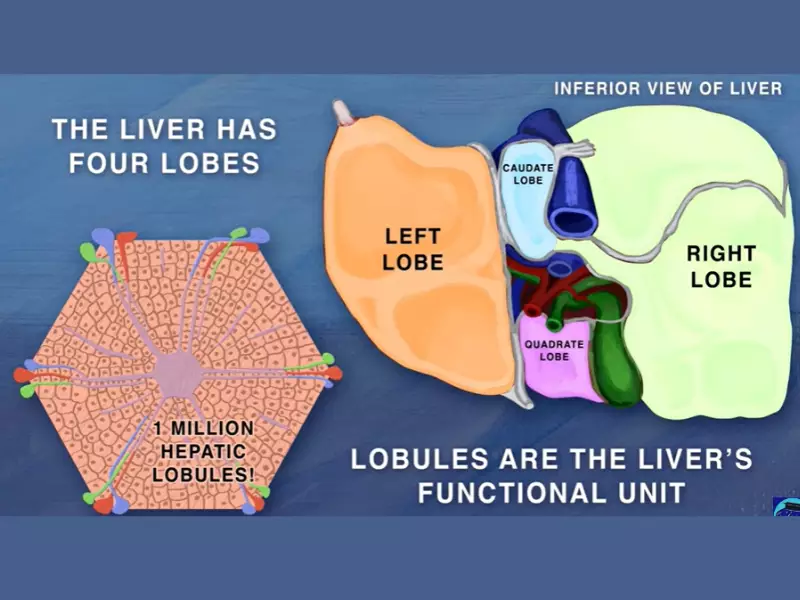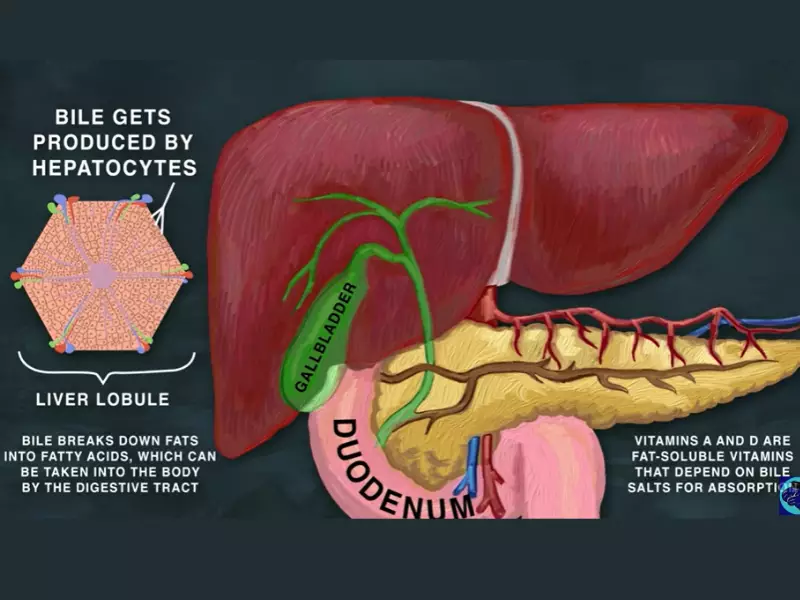The liver, a cornerstone of the human body’s internal ecosystem, plays multifaceted roles in ensuring our well-being, from detoxification to the synthesis of vital proteins. At the cellular level, this organ’s functionality hinges on the orchestrated actions of various cell types, among which Kupffer cells and hepatocytes stand out for their critical contributions. These cells, though sharing a common habitat, perform distinctly pivotal functions that are fundamental to the liver’s overall performance and health.
Kupffer cells, the liver’s resident macrophages, are primarily involved in the body’s immune response, filtering and breaking down bacteria, worn-out blood cells, and debris. Hepatocytes, on the other hand, make up about 80% of the liver’s mass and are essential for metabolic processes, including detoxification, metabolism of nutrients, and protein synthesis. Understanding the difference between these two cell types is key to comprehending the liver’s complex functionality and its ability to regenerate and repair itself.
While Kupffer cells serve as the liver’s first line of defense against pathogens, clearing the blood of toxins and worn-out cells, hepatocytes are the workhorses of metabolic processes, transforming nutrients, producing bile, and detoxifying harmful substances. Their collaboration ensures the liver can perform its diverse and vital roles in maintaining the body’s internal balance and responding to injuries and infections effectively.

The Liver’s Vital Roles
The liver stands as a central figure in the human body’s complex system, not only because of its size but due to its multifaceted functions essential for life.
Anatomy and Function
The liver, a dark reddish-brown organ, lies on the right side of the abdominal cavity beneath the diaphragm. Its significance in the body’s ecosystem is unparalleled, performing over 500 vital tasks.
Overview of Liver Anatomy
The liver’s unique structure, divided into two primary lobes and further subdivided into thousands of lobules, facilitates its numerous functions. Each lobule consists of hepatocytes (liver cells) and is connected to small ducts that eventually link to larger ducts, forming the bile duct. Blood from the digestive organs flows into the liver through the portal vein, while oxygen-rich blood arrives via the hepatic artery.
Liver’s Role in Metabolism, Detoxification, and Immunity
- Metabolism: The liver is the powerhouse of metabolism, converting nutrients from the food we eat into essential blood components, storing vitamins and minerals, and producing energy-providing glucose.
- Detoxification: Acting as the body’s filter, it detoxifies harmful substances introduced by external sources (e.g., drugs, alcohol) and internal processes (e.g., ammonia production).
- Immunity: The liver’s Kupffer cells play a critical role in the body’s immune response, capturing and digesting bacteria, fungi, and other pathogens.
Kupffer Cells Explained
Kupffer cells, named after the German anatomist Karl Wilhelm von Kupffer, are the liver’s resident macrophages and form an integral part of our immune system.
Identity and Location
Definition and Origin
Kupffer cells are specialized macrophages located in the liver’s sinusoids, acting as the first line of defense against pathogens entering the liver from the gut.
Location Within the Liver
They reside in the liver’s sinusoidal lining, strategically positioned to filter and cleanse the blood passing through the liver from the gastrointestinal tract.
Functional Roles
Kupffer cells are pivotal in maintaining liver health and systemic immunity.
Immune Defense
These cells engulf and destroy pathogens, dead cells, and other debris, showcasing the liver’s essential role in immune defense.
Breakdown of Red Blood Cells
They are involved in the recycling of red blood cells, breaking them down to salvage iron and other components for new cell synthesis.
Participation in Liver Regeneration
Kupffer cells secrete factors that promote liver regeneration, highlighting their importance in liver health and recovery from injury.
Hepatocytes Unveiled
Hepatocytes are the liver’s workhorse cells, performing the majority of its metabolic, detoxification, and synthetic functions.
Identity and Structure
Definition and Characteristics
Hepatocytes are the liver’s main cell type, making up about 80% of the liver’s volume. These cells are unique in their ability to regenerate, allowing the liver to repair itself after damage.
Structural Adaptations for Their Functions
These cells are structurally optimized for their roles, with a high number of mitochondria for energy production, smooth endoplasmic reticulum for detoxification, and tight junctions to control the passage of substances.
Core Functions
Hepatocytes are central to the liver’s diverse functions.
Metabolism of Carbohydrates, Fats, and Proteins
They regulate the balance of glucose, lipids, and amino acids, ensuring energy availability and storage.
Detoxification Processes
Hepatocytes modify toxic substances into harmless or excretable forms, safeguarding the body from potentially harmful chemicals.
Synthesis of Essential Proteins and Enzymes
These cells produce vital proteins, including albumin, and enzymes necessary for blood clotting, further underscoring their crucial role in maintaining bodily functions.
Role in Bile Production
Hepatocytes produce bile, a critical substance for the digestion and absorption of fats and fat-soluble vitamins in the intestine.

Key Differences Highlighted
Cellular Functions
The primary roles of Kupffer cells and hepatocytes within the liver are distinct yet equally vital for the organ’s overall function. Kupffer cells, acting as the liver’s resident macrophages, play a crucial role in immune defense. They identify, engulf, and destroy bacteria, foreign particles, and dying red blood cells, effectively cleaning the bloodstream. On the other hand, hepatocytes, which make up about 80% of the liver’s volume, are primarily responsible for metabolic activities, including the metabolism of fats, carbohydrates, and proteins, detoxification of blood, production of bile, and storage of vitamins and minerals. This functional divergence is fundamental to the liver’s ability to perform a wide array of critical biochemical processes.
Structural Distinctions
The differences in cellular structure and location between Kupffer cells and hepatocytes are noteworthy. Kupffer cells are found lining the walls of the liver’s sinusoids (small blood vessels) and are part of the mononuclear phagocyte system. This strategic positioning allows them to efficiently filter and clean the blood. Hepatocytes, in contrast, are polygonal cells that form the bulk of the liver’s parenchyma. They are organized into lobules, with each hepatocyte being in close contact with the blood flowing through the sinusoids, enabling efficient exchange of materials and execution of metabolic functions.
Contribution to Liver Health
Each cell type contributes uniquely to liver function, underscoring the organ’s complex biology. Kupffer cells’ ability to remove pathogens and debris from the blood is essential for preventing infections and maintaining the purity of the bloodstream. Hepatocytes’ metabolic and synthetic functions are critical not only for nutrient metabolism but also for the synthesis of vital proteins such as albumin and clotting factors, detoxification, and bile production, essential for digestion and waste elimination. This complementary action ensures the liver can support almost every other organ in the body.
Interactions and Interdependence
The synergy between Kupffer cells and hepatocytes is a testament to the liver’s intricately coordinated operations. Kupffer cells, through their cleanup activities, can modulate the environment within the liver, influencing hepatocyte function. For example, the cytokines released by Kupffer cells during immune responses can affect hepatocyte metabolic activities. Conversely, the normal functioning of hepatocytes is crucial for maintaining the liver’s structure and the proper flow of blood and lymph, indirectly supporting Kupffer cells’ ability to patrol the liver’s vascular spaces.
Impact on Liver Pathology and Health
The impact on liver pathology and health from these cell types is profound. Dysregulation in the function of either Kupffer cells or hepatocytes can lead to a cascade of liver issues. Overactivation of Kupffer cells, for instance, can contribute to liver inflammation and fibrosis, while damage to hepatocytes can result in compromised metabolic functions and decreased liver regeneration capacity. Understanding the balance and interaction between these cell types is crucial in diagnosing, treating, and managing liver diseases.
Research Insights
Recent Studies
Recent research on Kupffer cells and hepatocytes has shed light on novel aspects of liver function and disease. Studies have explored how Kupffer cells’ activation pathways contribute to liver inflammation and fibrosis, offering potential targets for therapeutic intervention. Similarly, advancements in understanding hepatocytes’ role in liver regeneration have opened new avenues for treating liver failure and enhancing recovery post-injury. The research also highlights the liver’s remarkable adaptability and the potential for targeted treatments to promote healthy liver function.
Future Directions
The potential implications for liver disease treatment and management are significant. Future research aims to develop strategies that modulate Kupffer cell and hepatocyte functions in a controlled manner, potentially reversing or preventing liver diseases such as hepatitis, fatty liver disease, and cirrhosis. The exploration of gene therapy, cell transplantation, and novel pharmacological agents promises to transform the landscape of liver disease treatment, offering hope for improved outcomes and quality of life for affected individuals.
Frequently Asked Questions
What Are Kupffer Cells?
Kupffer cells, named after the German anatomist Karl Wilhelm von Kupffer who first identified them, are specialized macrophages located in the liver. They form part of the body’s immune system, trapping and digesting microbes, cellular debris, and foreign particles in the blood as it passes through the liver. Their role in detoxification and immune defense is crucial for maintaining liver health and function.
How Do Hepatocytes Function?
Hepatocytes are the liver’s main cell type, performing a wide array of functions essential for life. These include metabolizing carbohydrates, fats, and proteins; detoxifying blood by removing drugs, alcohol, and toxins; synthesizing necessary proteins and cholesterol; and producing bile, which is essential for digesting fats. Hepatocytes’ adaptability and regenerative capacity also play a critical role in liver regeneration following injury.
What Makes Kupffer Cells and Hepatocytes Different?
Kupffer cells and hepatocytes differ fundamentally in function and structure. Kupffer cells are part of the immune system, focusing on defense mechanisms by phagocytosing pathogens and debris. Hepatocytes, however, are primarily metabolic cells, responsible for processing nutrients, detoxifying substances, and producing vital proteins and bile. Their distinct roles underline the liver’s complexity and its ability to perform a wide range of vital tasks.
Why Are Kupffer Cells and Hepatocytes Important?
Kupffer cells and hepatocytes are essential for liver functionality and, by extension, overall health. Kupffer cells’ role in immune defense protects the liver and the body from infection and inflammation, while hepatocytes’ metabolic functions are critical for energy management, detoxification, and nutrient processing. Their health and proper function are key to preventing liver diseases and maintaining the body’s metabolic balance.
Conclusion
The intricate dance between Kupffer cells and hepatocytes illustrates the liver’s complexity and its pivotal role in maintaining the body’s health. These cells’ unique functions and collaborative interactions ensure the liver’s efficiency in detoxification, metabolism, and immune defense. Understanding the differences between Kupffer cells and hepatocytes sheds light on the liver’s capacity to heal and regenerate, highlighting the importance of liver health in overall well-being.
As we continue to explore the liver’s cellular composition, the distinction between Kupffer cells and hepatocytes remains a fundamental aspect of comprehending how this vital organ supports life. Their individual roles and interactions are critical for the liver’s functionality, making their study and preservation essential for advancing liver health and treating liver diseases.
